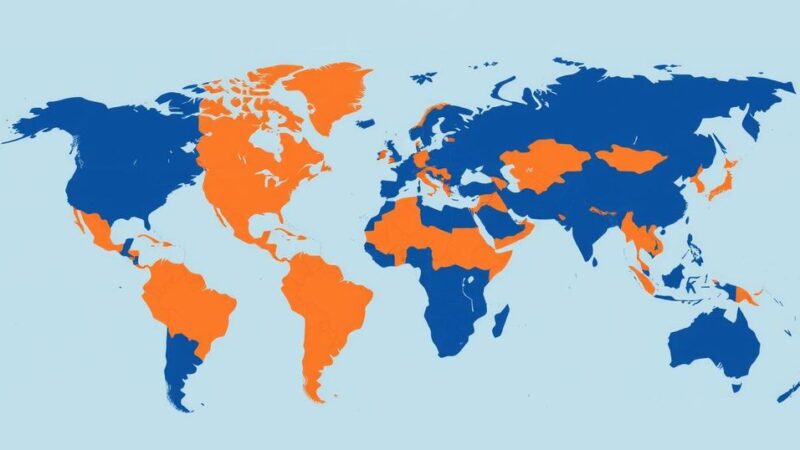Venezuela’s disputed elections have led to fears of increased migration within Latin America, as millions already displaced by economic collapse face further uncertainty. Neighboring countries brace for potential waves of new arrivals, leading to heightened tensions and strict immigration measures. With public sentiment souring towards migrants, authorities are grappling with how to address the complex interplay of security, resources, and migrant humanitarian needs.
Countries across Latin America are increasingly apprehensive about a new wave of migration from Venezuela following disputed elections that have left the nation in turmoil. With President Nicolás Maduro announcing a controversial victory, regional fear mounts as millions of Venezuelans, already having fled their homeland, face further uncertainty. The United Nations estimates that around 7.7 million Venezuelans have left the country amid an economic collapse, with many more possibly set to depart due to ongoing political instability.
The situation has prompted concerns from various countries including Colombia and Chile, as they anticipate increased migration. Pollsters and political analysts recognize that frustration among Venezuelans may lead to more families packing their belongings to join relatives abroad. As local economies grapple with rising numbers of displaced individuals, host nations are enacting strategies to mitigate potential job competition and societal strain.
Countries such as Peru, where many Venezuelans have migrated, are witnessing a growing unease among street vendors who fear job losses due to escalating migration. Authorities across the region are tightening immigration controls and enhancing border security to prevent additional influxes while also grappling with rising tensions among local populations regarding the presence of migrants.
This growing apprehension extends to government responses, as seen in Chile, where recent announcements of increased border surveillance have aimed to manage migrant entries. The Chilean government has also deployed armed forces to bolster control along its borders, reflecting a worrying trend towards more stringent immigration policies amid a backdrop of social unrest and protests in Venezuela.
Public sentiment towards Venezuelan migrants has soured, particularly in Chile, where incidents of violence against migrant communities have been reported. Statistical data illustrates a significant shift in public perception regarding immigration, with an increase in negative attitudes fueled by recent crime rates and socioeconomic dissatisfaction. Resultantly, proposed legislative measures to criminalize illegal migration are generating heated public debate.
Colombia remains a primary destination for Venezuelan migrants, given its previously generous policies offering temporary protected status. However, with over 2 million Venezuelans already granted this status, authorities are facing challenges in sustaining their support due to resource constraints. The prospect of extending these protections under current socioeconomic conditions remains uncertain, further complicating the situation for potential migrants.
The recent elections in Venezuela have further intensified an already critical migration crisis throughout Latin America. The economic collapse over the past decade has seen millions fleeing the country, with many neighboring states feeling the pressure of accommodating the influx of Venezuelans. Regional governments are now caught in a delicate balance between humanitarian responsibilities and growing public discontent regarding immigration and employment issues, provoking a series of policy responses aimed at regulating migrant flows while addressing domestic concerns regarding security and jobs.
The fallout from Venezuela’s electoral crisis exacerbates an ongoing migration challenge for Latin America. With millions already displaced, the potential for increased migration looms large as socio-political conditions in Venezuela deteriorate. Regional authorities are scrambling to manage heightened tensions and public anxieties related to the influx, which may lead to stricter immigration policies and a re-evaluation of how migrant populations are treated in host countries. The interplay between public sentiment, political decisions, and humanitarian needs will shape the future landscape of migration across the region.
Original Source: apnews.com






